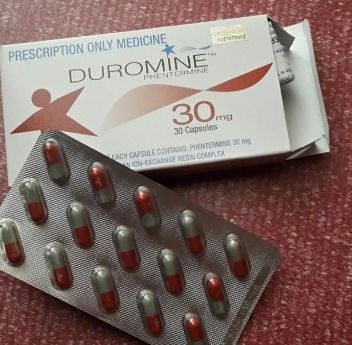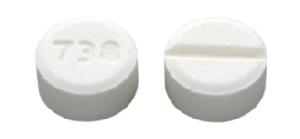- You have no items in your shopping cart
- Continue Shopping

When it comes to managing ADHD (Attention-Deficit/Hyperactivity Disorder) and certain types of sleep disorders like narcolepsy, stimulant medications such as Adderall and Vyvanse are often prescribed. However, while they share similarities in treating these conditions, there are significant differences between them—especially when comparing 30 mg Adderall and 50 mg Vyvanse. Understanding these differences can help you work with your healthcare provider to determine which treatment option is best for your specific needs.
Shop Now: duro-mine pharmacy
What Is Adderall?
Adderall is a combination of two stimulants: amphetamine and dextroamphetamine. These compounds work by increasing the levels of neurotransmitters like dopamine and norepinephrine in the brain, helping to improve focus, attention, and impulse control.
- Dosage & Effect: A 30 mg dose of Adderall is typically prescribed for moderate cases of ADHD or narcolepsy. It provides an immediate release, meaning that its effects are usually felt within 30 to 60 minutes after consumption. The immediate-release formulation lasts around 4 to 6 hours, making it effective for managing symptoms during specific parts of the day. However, patients may require multiple doses throughout the day to maintain a consistent effect.
What Is Vyvanse?
Vyvanse (lisdexamfetamine) is a prodrug, meaning it is an inactive compound that must be metabolized in the body to become active. Vyvanse converts to dextroamphetamine once ingested, which also increases the levels of dopamine and norepinephrine, helping to improve attention and reduce hyperactivity.
- Dosage & Effect: A 50 mg dose of Vyvanse is considered a moderate dose, commonly prescribed for individuals with ADHD. Unlike Adderall, Vyvanse offers a longer-lasting effect, typically providing symptom relief for 10 to 14 hours. This extended duration means patients only need one dose per day, often in the morning, to cover most of their day’s activities. The slow, consistent release of medication also helps to minimize peaks and crashes, which are sometimes associated with Adderall’s immediate-release formulation.
Comparing 30 mg Adderall vs. 50 mg Vyvanse
Although both medications are stimulants and work by boosting the same neurotransmitters, the ways in which they function, their duration of effect, and how they’re metabolized differ significantly. Here’s a closer look at some of the key differences between 30 mg Adderall and 50 mg Vyvanse:
- Mechanism of Action:
- Adderall is a mixture of amphetamine salts that act directly to increase dopamine and norepinephrine levels.
- Vyvanse, as a prodrug, is inactive until metabolized into dextroamphetamine, leading to a slower onset but smoother effect.
- Duration of Effect:
- Adderall IR (Immediate Release) in a 30 mg dose typically lasts 4 to 6 hours, meaning it may need to be taken more than once a day to manage symptoms.
- Vyvanse’s 50 mg dose offers an extended release, lasting 10 to 14 hours, making it ideal for individuals looking for a once-daily medication without the need for multiple doses.
- Onset Time:
- The effects of Adderall can be felt quickly—often within 30 to 60 minutes.
- Vyvanse, because it must be metabolized first, has a slower onset, generally taking 1 to 2 hours to start working.
- Risk of Abuse:
- Adderall’s immediate-release formulation can have a higher potential for misuse since its effects are felt more quickly, and it may produce a more noticeable “high.”
- Vyvanse is considered to have a lower potential for abuse because of its prodrug nature, making it harder to misuse since it must be metabolized before becoming active.
- Side Effects:
- Both medications can cause similar side effects, including loss of appetite, increased heart rate, dry mouth, anxiety, and insomnia.
- Adderall may cause more intense fluctuations in energy levels due to its shorter duration, leading to a “crash” as the medication wears off.
- Vyvanse provides a more gradual effect, potentially leading to fewer peaks and crashes throughout the day.
- Dosing Flexibility:
- With Adderall, especially in immediate-release form, there’s more flexibility in dosing. Some patients may take a smaller dose in the afternoon to maintain focus without interfering with sleep.
- Vyvanse, on the other hand, is a once-daily medication, which might be more convenient for those who prefer not to take multiple doses throughout the day.
Choosing Between 30 mg Adderall and 50 mg Vyvanse
The decision between 30 mg Adderall and 50 mg Vyvanse ultimately depends on several factors, including your daily routine, lifestyle, and how your body responds to each medication. For those who need immediate symptom relief and don’t mind multiple doses, Adderall might be the preferred choice. However, for individuals looking for consistent, long-lasting coverage with less potential for fluctuation in symptoms, Vyvanse could be a better option.
It’s also important to note that each individual may respond differently to these medications. Some may find Adderall works better for their symptoms, while others may prefer the smoother and longer-lasting effect of Vyvanse. Additionally, both medications may interact differently with other prescriptions or medical conditions, so working closely with a healthcare provider is essential in finding the best treatment plan for your ADHD or narcolepsy.
Consult Your Healthcare Provider
While comparing 30 mg Adderall vs. 50 mg Vyvanse provides an overview of their similarities and differences, your unique health situation will dictate which option is best for you. Be sure to discuss your symptoms, treatment goals, and any concerns you may have with your healthcare provider, who can tailor a prescription plan that suits your needs.




